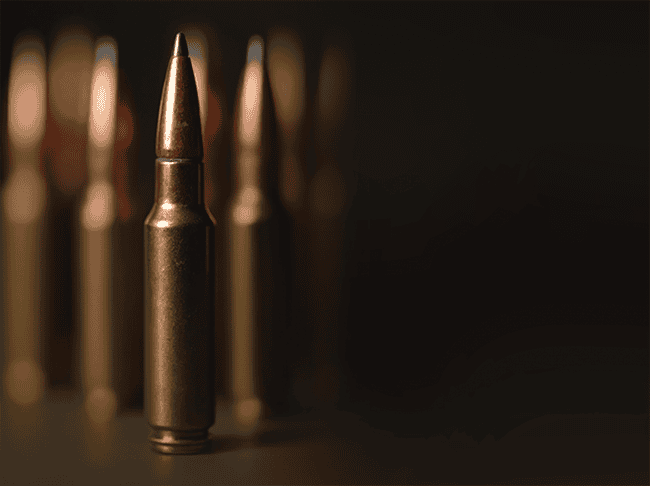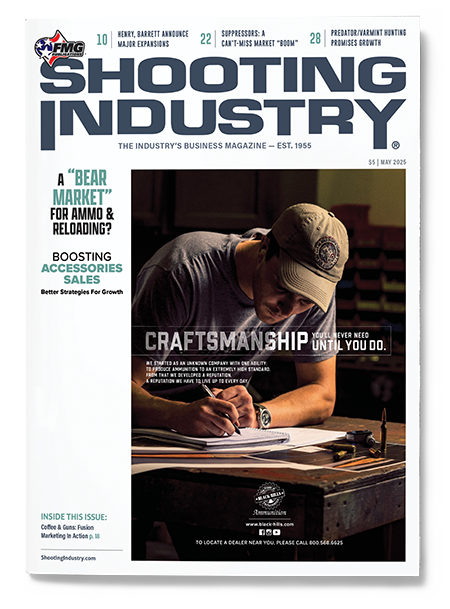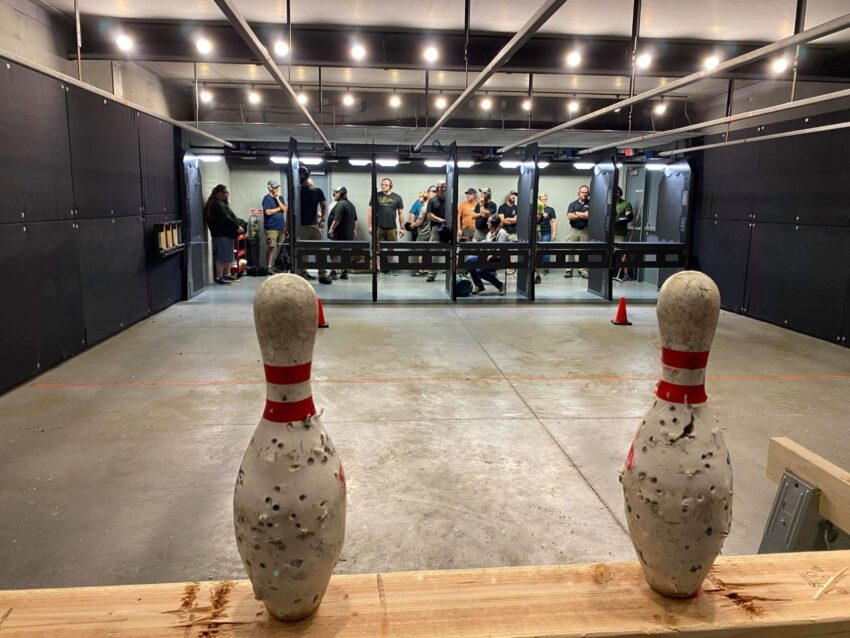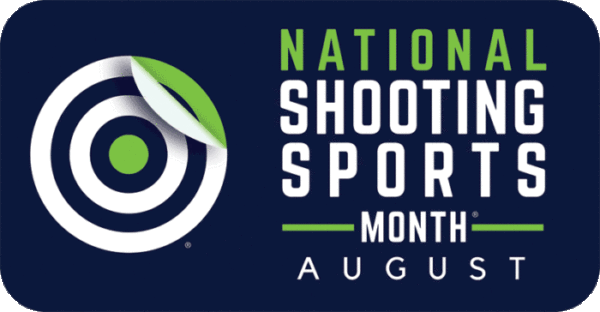The Ammunition Squeeze
Ukraine War Effort To Strain Ammo, Reloading Components In Bear Market
It takes 21 lbs. of M6 or about 24 lbs. of IMX-101 smokeless powder to propel a 155mm artillery shell, the primary battlefield fare in the Ukraine War.
They use a lot of it in that conflict. Inventories are short, and manufacturers are working apace to rebuild stocks while supplying Ukraine’s war effort. As it has for years, this will continue to have a conspicuous effect on the supply of sporting ammunition and reloading supplies in the United States.
Impact Of Trump 2.0
On the other hand, demand for ammo and reloading components is currently relaxed. It is largely attributable to the election of a Republican president.
Aaron Oelger, VP of marketing for Hodgdon Powder Co., said Republican control of the White House and Congress will probably avert the hoarding of ammo and reloading components that usually occurs during a Democrat administration.
“It’s a little bit of a puzzle still,” Oelger noted. “On the one hand, we have falling demand. It’s no secret demand fell right after the first [Donald Trump] election. People feel a little more secure. Everybody [retailers and distributors] bought ‘long’ because they thought Hillary [Clinton] was going to be elected. We had high inventories and slumping demand. Last year, people thought Trump was likely to win. I don’t think you saw the massive inventory buildup like there was eight years ago.”
Oelger contended it’s too early to bet on the ammo market for the next couple of years.
“Trump 2.0 is very different than Trump 1.0,” he elaborated. “I’m not sure what to expect for this year, but with demand slumping a little bit, it’s probably not where we want to be from a supply perspective. But, I think product will still be available.”
The difference, Oelger points out, is no major wars were being fought from 2016–2020. Supply was high, but so was manufacturing capability. Manufacturing capability is the wild card as long as the war endures.
“Back then there was plenty of manufacturing capacity available, but it’s simply not the case this year,” he asserted. “Demand for powder and propellants to rebuild stocks is intense. They’re making artillery propellant, but gunpowder is not being made.”
Consumers are noticing conspicuous shortages of 4895 and 4350 powders in the Hodgdon and IMR lines. Retumbo and Trail Boss are also scarce, according to Oelger. H4895, H4350, Trail Boss and Retumbo are made in Australia, he added.
Shipping them also affects consumer prices. The IMR variants are made in Canada, whose dicey trade relationship with the Trump administration could increase prices due to tariffs.
“4350, 4895 and the like are all extruded powders,” Oelger explained. “They’re in high demand. People want those a lot. The challenge of shipping product from Australia is substantial. Shipping prices are insane, and there’s limited shipping space.”
Some popular powders have been absent from shelves for so long some consumers believe they are out of production. It’s not the case, Oelger said.
“Trail Boss? We haven’t got any Trail Boss for the fifth year,” Oelger stated. “We have not been able to get it made for us. Demand is off the charts right now because we can’t get it. When we haven’t been able to get a product for five years, demand is astronomical because it can’t be built.”
Shotgunning Trends
Popular shotgunning powders are also in short supply.
“Clays, International, Universal, Unique; you can’t find it,” Oelger noted. “It’s not available. We have not been able to get those powders for four years. We have two new shotgun powders, High Gun and Perfect Pattern. Those sell really well, but we can’t get a consistent supply of other powders. Perfect Pattern and High Gun are different powders, but shotshell is a hard niche to fill because those products are unique and high in demand.”
Christian Hogg, director of marketing for Fiocchi of America, said the availability of primers, brass, shotshell hulls, bullets and spherical shot is stable — but he added the shotshell and metallic markets are different.
“We’re [Fiocchi] known as a shotshell brand, but we do have centerfire products,” he provided. “We recently introduced an enhanced line of rifle ammo — four SKUs — with optimized velocities across a variety of barrel lengths. Each of those four calibers has a specific powder used on grain weight. Last June, we were not able to build it until December [2024], because we couldn’t get the powder we needed.”
According to Hogg, to make sufficient amounts of these products Fiocchi made significant capital investments, including new machinery.
“Our plan was to increase capacity and put more product on the market,” he said. “We’re hampered to maximize that because we’re not getting regular powder deliveries. We were told we’re getting the same amount of powder as the year before and nothing more.”
Manufacturers make and sell a lot more shotgun shells because shooters consume a lot more ammunition. A deer hunter might fire three or four rounds in a season. A skeet shooter typically fires 50–100 rounds in a session. Despite the higher consumption, Hogg observed, shotshell components, besides powder, are plentiful.
“Fiocchi has a primer manufacturing facility in Italy,” he informed. “Efficiencies have been done on our end to produce more products. As for the rest of the market, CCI and Winchester are making their own stuff. A lot of it has corrected itself. There’s been some kind of reset.”
Navigating Obstacles
On the other hand, there is no easy remedy to alleviate the shortage of range-ready ammo due to the shortage of nitrocellulose.
“In January 2024, we had no nitrocellulose to make powder,” Hogg said. “The manufacturer we do business with had government contracts that needed to be filled before they pushed anything out in the commercial market. There are still issues with nitrocellulose. It hasn’t resolved itself.”
Ironically, Hogg said gun powder production actually increased 40% over the past couple of years. A great percentage of it is used for military contracts. The remainder trickles down to the consumer market.
“With some manufacturers, we’ve been able to renegotiate contracts with powder suppliers,” Hogg said. “We’re paying in advance for guaranteed delivery. Last year we could get powder, but you didn’t know what kind of powder or when it would be delivered.”
This uncertainty dramatically affects research, development and delivery of new products, Hogg stated.
“We’re trying to get unique powders for specific new product developments,” he said. “It didn’t have an effect this year, and I feel pretty confident about things this year in terms of powder availability, but some folks are still going to struggle to get powder. Smaller manufacturers, if they are still sourcing powders, hulls, primer and shot, might face challenges if they don’t have existing relationships or if they can’t get their hands on powders and other components.”
A “Tough Market”
Like Oelger, Hogg has noticed the market soften after the 2024 presidential election.
“It’s not moving as robustly as it was prior to now,” he affirmed. “Federal and Winchester are starting to put out consumer rebates to encourage sales. I haven’t seen that in a while. Mail-in rebates, where you get a rebate from a consumer ammo manufacturer, is not one of my favorite things to do. It’s not an ideal way to do business.”
Given the matrix of limitations, Hogg presumes 2025 will be a challenging year for the ammunition and reloading industries.
“It’s going to be a tough market in ’25,” he proposed. “It’s the early part of the year so far. Getting through SHOT, initial sales are positive compared to what we thought from Fiocchi’s standpoint. Orders are not up, but there’s good visibility from the first quarter. Typically, we try to have people book out the year in advance. Now we’re getting 90-day visibility instead of 180 days.”
Even if the Ukraine war ends in 2025, the consumer market probably won’t stabilize until the U.S. and NATO replenish their artillery inventories. It could take a long time.






